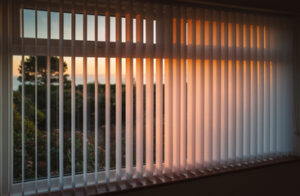Home Renovation Princeton NJ is a great way to update your living spaces and tailor them to meet your lifestyle needs. However, effective renovation requires careful planning and realistic expectations.

Set a budget that includes materials, labor, and a contingency fund. Be sure to account for unforeseen expenses, as they often arise during the renovation process.
A home renovation is a great way to update your living space and add value to your property. However, it can be expensive if you don’t plan ahead. That’s why it’s important to set a budget before starting any work. This will help you avoid over-spending and make smart decisions about which projects to tackle first. There are many factors that influence home renovation costs, including labor, material, and location. Labor costs can account for up to half of the total cost, while material expenses are another significant factor. This is especially true if you choose high-end materials, such as granite or hardwood floors.
To estimate the cost of your home renovation, you can use online tools such as Billdr or contact local contractors for quotes. However, be careful not to rely too heavily on internet estimates, as the numbers can vary widely. A good rule of thumb is to request estimates from three to five different contractors. Also, don’t settle for the lowest bid. A low estimate could indicate that the contractor is cutting corners or may not be reputable.
Depending on where you live, there are various home renovation rebates and incentives available to homeowners. These can significantly reduce your renovation costs. Some of these rebates include energy efficiency rebates, home equity lines of credit, and even grants for heritage buildings. To find out if there are any home renovation incentives in your area, check with your local government or housing authority.
Another important thing to consider is the amount of time you have available for your project. If you’re renovating on a tight schedule, you may need to compromise on some of your project goals in order to stay within budget. For example, you might have to opt for a cheaper countertop material or decide to do a smaller renovation instead of a full kitchen remodel.
A final important factor is how you’re going to finance your renovation. If you have the funds to pay for it in cash, you’ll have more flexibility when it comes to the scope of your renovation. If you’re going to need to borrow money, be sure to research the best interest rates and terms available.
Design
Home renovation is a big project, and you will need to create a blueprint for the work that needs to be done. A professional home designer will help you identify the areas of your home that need to be renovated and come up with a plan that is both functional and attractive. A design expert will also help you select colors, materials, and layouts that will add value to your home and fit within your budget.
A major difference between home remodeling and home renovation is that remodeling usually involves changing the overall structure of your house, while renovating focuses on updating or reinvigorating existing features. For example, a remodel may include tearing down walls to make an open-concept living space, while a renovation could involve re-painting your walls or upgrading flooring.
Renovating your home allows you to keep up with the latest trends and styles in architecture and interior design. It also allows you to customize your living spaces to suit your preferences and lifestyle. If you’re considering selling your home in the future, it can help attract prospective buyers by making your house look well-maintained and in line with contemporary design trends.
While it’s tempting to get caught up in the latest home design trends, it’s important to choose timeless designs that will stand the test of time. A well-executed home renovation will increase the value of your property and improve the comfort, functionality, and aesthetics of your living spaces.
In addition to the visual improvements that can be made with a home renovation, you can also improve the curb appeal of your home by adding fresh paint and landscaping. A well-maintained, beautiful-looking home will give potential buyers a positive first impression and increase the chance of a quick and profitable sale.
One of the most popular reasons to undergo a home renovation is to add extra living space. Whether it’s a kitchen extension or a basement remodel, a renovation can transform your home into a more spacious and comfortable living space. Having more space can help accommodate growing families or meet the needs of visiting guests.
Permits
Whether you are remodeling your kitchen, adding a bathroom or turning an attic into a master suite, it is essential to understand the home renovation permit process. This step ensures that your project complies with local building codes, zoning regulations and safety standards. It also protects you from potential fines or legal issues down the road.
Most cities require a permit for most renovation projects. However, requirements vary by city and can be complicated. It is best to contact your local city hall or check out the city’s website before you start making improvements. In addition, it is important to know whether you are making the changes yourself or hiring a contractor. If you hire a contractor, it is important that they get the permit and are named on the permit as the person responsible for meeting codes. This will help you avoid any issues down the road if you need to sell your house or make repairs in the future.
When applying for a permit, it is essential to prepare detailed plans of your renovation. It is also common for these plans to be reviewed and approved by a professional engineer or architect. Once the permit is approved, it is time to begin the actual renovation work. Throughout the renovation, the local government will conduct regular inspections to ensure that the work is being done correctly.
Homeowners often get caught off guard by the complexity of home renovation permits. If you are not prepared, it can be costly and time-consuming to navigate the process. Moreover, many insurance companies will not cover renovations that have not been permitted by the local authorities. Additionally, failing to get a permit can prevent you from selling your home in the future or can even land you in court. Fortunately, by understanding when you need a permit, how to obtain one and the importance of working with a qualified residential architecture firm, your home renovation can go smoothly.
Contractors
A home renovation contractor is a vital member of the team, coordinating with other professionals throughout the project. This includes architects, interior designers, engineers, and electrical contractors. A professional will help ensure that your vision is carried out on time and within budget. They will also have the expertise to address unexpected problems and avoid complications during construction. Additionally, they can assist with obtaining permits and working with local building codes.
When interviewing potential contractors, make sure they provide quality references and photos of their previous work. It’s also a good idea to meet them in person to discuss the scope of the work, timelines, and budget. This will ensure that everyone is on the same page and minimizes misunderstandings.
After discussing the plans and specifications with your builder, they should prepare a detailed estimate. This should include all costs, materials, and expected completion dates. It should be clearly outlined so that you can compare estimates and choose the best one for your renovation. Also, pay attention to how quickly your builder returns phone calls and emails. If they are difficult to reach, it could be an indicator of future communication issues.
While you can save money by completing some aspects of your renovation on your own, you should use a general contractor for larger projects. This is because they will be responsible for hiring subcontractors, securing required permits, and overseeing the overall construction process. A good general contractor will be able to manage these tasks and will help you avoid costly mistakes.
A good general contractor will also be able to incorporate green features into your home remodel. For example, they can recommend reclaimed wood and low-VOC paint to create a healthier environment. They may also be able to recommend smart home technology, such as energy-efficient windows and thermostats. This can add functionality and increase the value of your home.
